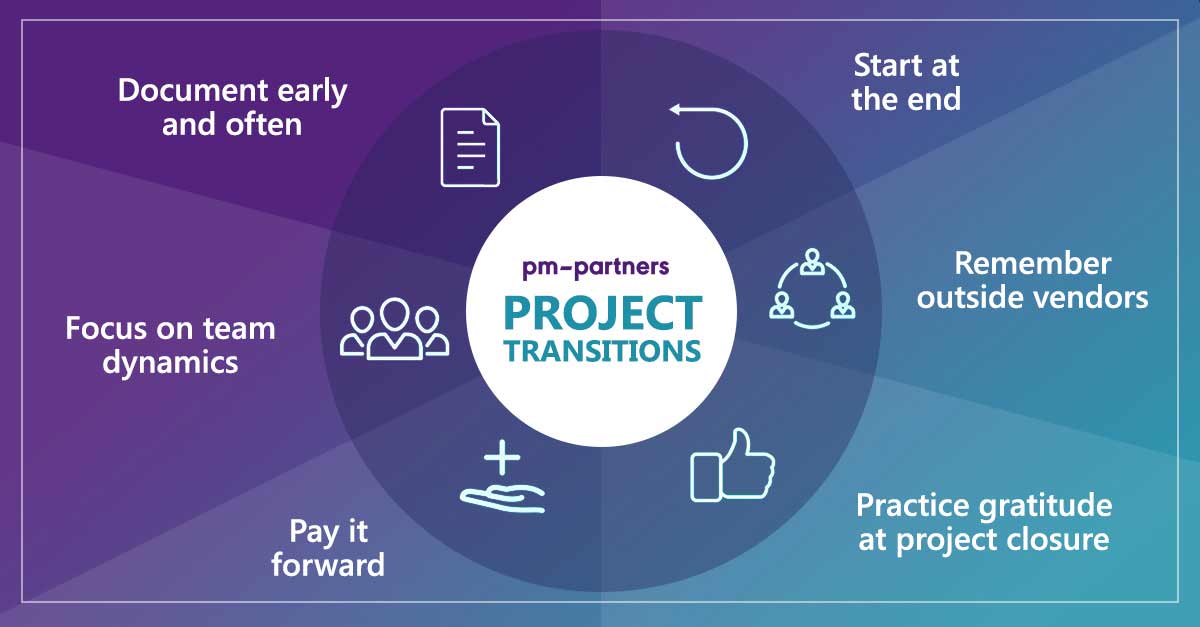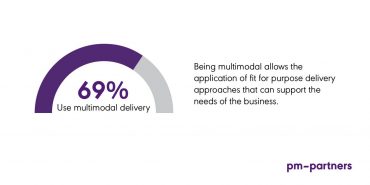Better end-of-project transitions mean better outcomes

When you are in the midst of a complex project, your key concerns are around developing a product or solution that will realise all the benefits initially planned for. But what is often left by the wayside is the project transition to the end users – will they enjoy a seamless transition to business as usual, or will adoption be overly complicated due to a lack of focus on the human element?
For some organisations, this is merely a welcome reminder. Yet for others, the ability to go from the obvious to the tactical is more challenging. Here, we outline six ways you can maximise your end-of-project transitions to improve their long-term value – and enjoy a project closure to be proud of.
1. Start at the end
How many times have you thought a project’s life cycle is over, only to have new requests emerge days, weeks or even months later? Prioritise alignment with all relevant stakeholders on what the true ‘end of project’ looks like upfront.
Remember, calling a project complete is essential. This is the time to be explicit and get formal recognition from everyone involved across all aspects of completion. If there is a list of open items, ensure there is full acceptance for that as well.
2. Document early and often
Writing in PM Network magazine, author Novid Parsi offers this sage advice: “Project managers must be willing to go above and beyond to stay on top of what’s needed for project closing during all phases. By the time the project wraps up, many team members have already moved on – which can leave project managers scrambling to gather feedback and tie up documentation. Taking a proactive approach to gathering retrospective documentation can mitigate that risk and ensure project and program managers generate a more relevant and comprehensive final report.”
3. Remember outside vendors
Poor project transitions can lead to big misunderstandings. This includes vendors – from incomplete payments on contracts to legal disputes, reputational damage and even worse.
Closing a project with an external third party should share the same time, attention, visibility and clarity as your internal stakeholders.
4. Focus on team dynamics
Another part of project closure that is easily overlooked is the gathering of so-called ‘soft facts’. These are all the ways in which the team worked together that might not fit neatly on a sheet of numbers.
This is the best time to raise relevant questions, such as:
- How well did we work with remote teams?
- How was our cross-cultural communication?
- What did we learn about each other that made the project stronger?
- What factors contributed to hurdles or challenges, and what strategies can we deploy in future projects to mitigate those risks?
5. Practice gratitude at project closure
A strong project or program professional can work effectively with diverse sets of people, from those in the C-suite right down to customer-facing employees. The bottom line is that treating everyone with the same respect will reap the greatest benefits over the long term.
Being a team player can stand you in good stead over the project life cycle (i.e. beyond the transition to the end users). Also, don’t forget to publicly thank everyone involved in the project for their contributions, however small they might have been.
6. Pay it forward
During any project, opportunities to improve efficiencies arise that may lie outside your current scope. Don’t let those ideas fall by the wayside. It’s everyone’s job in a high-ownership culture to help the wider business run more efficiently or to help another team’s project become more successful.
Transitions anywhere – at work, at school and in everyday life – can be tough. Learning from others is how we navigate those challenges. What are some transitions to BAU that have worked for you?
Does your organisation require assistance with projects, programs or PMO delivery? Reach out to the experts at PM-Partners today or call us on 1300 70 13 14.








